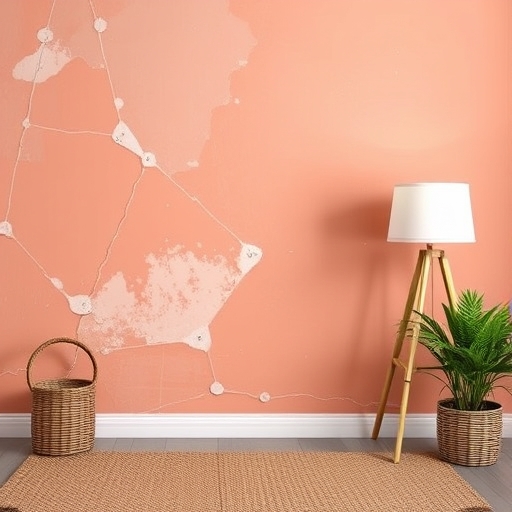How to Match Paint: A Comprehensive Guide
When it comes to home improvement and decoration, one of the most daunting tasks can be matching paint colors. Whether you’re touching up a wall, repainting an entire room, or trying to find the perfect hue for your new furniture, understanding how to match paint can make all the difference. In this article, we’ll explore the best methods for matching paint, the tools you need, and tips to ensure a flawless finish.
Understanding Color Theory
Before diving into the practical aspects of paint matching, it’s essential to have a basic understanding of color theory. This knowledge will help you make informed choices when selecting paint colors.
Color Wheel Basics
The color wheel is a visual representation of colors arranged according to their chromatic relationship. Here are some key components:
- Primary Colors: Red, blue, and yellow. These colors cannot be made by mixing other colors.
- Secondary Colors: Green, orange, and purple. These are created by mixing primary colors.
- Tertiary Colors: These are combinations of primary and secondary colors (e.g., red-orange).
- Monochromatic: Variations of a single color (e.g., light blue, medium blue, dark blue).
- Analogous: Colors that are next to each other on the color wheel (e.g., blue, blue-green, green).
- Complementary: Colors that are opposite each other on the wheel (e.g., blue and orange).
- Color Samples: Paint swatches from the store or samples of the existing paint.
- Paint Matching Apps: Smartphone apps that can analyze colors and suggest matches.
- Color Fan Deck: A portable tool that displays a variety of paint colors.
- Measuring Tools: A ruler or tape measure to take dimensions if you are matching a specific area.
- Lighting Samples: Different lighting can affect how color appears; natural light, incandescent, and fluorescent lighting can all change perception.
- A piece of the wall (if you have leftover paint).
- A furniture item or decor piece.
- A fabric swatch.
- Hue: The base color (red, blue, green, etc.).
- Saturation: The intensity or purity of the color (vivid vs. muted).
- Brightness: The lightness or darkness of the color.
- Paint Matching Apps: Use apps like ColorSnap or Paint My Place to take a photo of your sample. The app will analyze the color and suggest paint matches.
- In-Store Color Matching: Many paint stores offer color matching services. Bring your sample, and they will use a spectrophotometer to match the color.
- Natural Light: Always compare colors in natural light, as artificial lighting can distort color perception.
- Apply Samples: If possible, apply small samples of the paint on the wall or surface to see how they look once dry.
- Paint a Small Area: Use a small brush to paint a section of the wall.
- Observe at Different Times: Check how the color looks at different times of the day and under various lighting conditions.
- Ignoring Lighting: Always consider how different lighting affects color. What looks good in the store may not look the same in your home.
- Choosing Based on Memory: Don’t rely solely on memory for colors; use actual samples.
- Forgetting Finish Types: Different finishes (matte, satin, gloss) can alter the appearance of a color.
Color Harmonies
Understanding color harmonies can help you choose complementary shades:
Tools You Need for Paint Matching
To effectively match paint colors, you will need several tools. Here’s a list to ensure you’re well-equipped:
Step-by-Step Guide to Matching Paint
Here’s a detailed process for matching paint colors effectively:
1. Gather Your Samples
Start by collecting samples of the color you want to match. This could be:
2. Evaluate the Existing Color
Once you have your sample, evaluate its characteristics:
3. Use a Color Matching Tool
4. Compare with Swatches
Once you have suggestions, compare them with actual paint swatches. Here’s how to do this effectively:
5. Test the Paint
Before committing to a color, it’s crucial to test it:
6. Make Your Selection
After thorough testing and observation, you should have a good idea of which color matches best. Take your time to ensure you’re happy with your choice.
Common Mistakes to Avoid
When matching paint, it’s easy to make mistakes. Here are some common pitfalls and how to avoid them:
Comparison Table: Paint Matching Methods
| Method | Pros | Cons |
|---|---|---|
| Paint Store Color Matching | Accurate, professional results | May require travel, not always free |
| Paint Matching Apps | Convenient, can be done at home | May not be 100% accurate |
| Manual Color Swatches | Direct visual comparison | Limited by availability of swatches |
| DIY Testing | Personalized results with your space | Time-consuming, requires patience |
FAQs About Paint Matching
Q1: Can I match paint without a sample?
A: While it’s possible to get close by using color charts or swatches, having a physical sample will yield the best results.
Q2: What if I can’t find an exact match?
A: If an exact match isn’t available, consider using a complementary or analogous color to create a cohesive look.
Q3: How do I ensure the new paint blends well with old paint?
A: Test the new paint alongside the old paint to see how they interact. You may need to adjust the new paint’s hue or saturation for better blending.
Q4: What finish should I choose for my paint?
A: The finish depends on the surface: flat or matte finishes are good for ceilings, while satin or gloss finishes are better for high-traffic areas and trim.
Conclusion
Matching paint colors might seem challenging at first, but with the right tools and techniques, you can achieve beautiful results. By understanding the basics of color theory, evaluating your existing colors meticulously, and using modern tools, you can find the perfect match for your home. Remember to test thoroughly and take your time to ensure that the final result is exactly what you envisioned. Happy painting!

